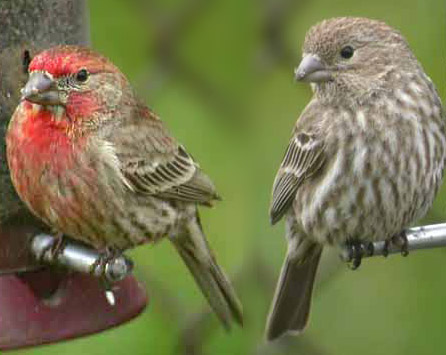
Why some birds have bright colored feathers
HOME | EGG COLOR | GENDER | MATING |MUTATIONS | SEE COLOR
Birds have several types of feathers of various shapes and sizes, which are specialized to serve different functions.
They are also useful for identification and attracting mates. Feathers come in a variety of colors,
from dull neutrals to bright and sometimes iridescent hues.

Birds' coloring did not develop at random, but has evolved through sexual selection.
Male birds have adapted to help them better attract females of their species.
The most obvious example of this is colorful plumage.
Large, colorful crests and tails, such as the elaborate "tail of eyes" displayed by the male peacock are examples
of feathers being used to attract the opposite sex. While the males and females of some bird species are nearly identical in color,
in most species it is typically the male who is more brightly colored than the female.
Birds rely mainly on visual cues when selecting a mate and have extraordinary eyesight with which to discern colors.
In the spring, during mating season, males will display brighter, more colorful plumage, sometimes referred to as breeding plumage.
The saturated red breast of the robin that is often associated with spring is a good example of this adaptation.
The dull coloring of most females in no accident either.
Female birds are most often brown or green, providing them camouflage while they care for their young in the nest.
Brightly colored feathers are replaced with colorful clothing and makeup.
Interestingly, while colorful plumage serves to increase a male's mating success,
it decreases his chance of survival by making him more easily visible to predators.
However, such traits still evolve because they increase mating and reproduction, even if they harm individual survival.
A male bird with a small, dull colored tail would probably have a much better chance of survival,
but if he did not find another way to attract females, his genes could not be passed down to the next generation.
A few species of birds do exist in which the females are larger and more colorful than males.
Interestingly, in these instances, mating roles are typically reversed.
Females of these species rely on their appearance to attract mates
while the dull colored males stay in the nest to incubate the eggs and care for the young.
Information for this page provided by the link below
https://www.helium.com/items/255216-why-some-birds-have-bright-colored-feathers
HOME | EGG COLOR | GENDER | MATING |MUTATIONS | SEE COLOR